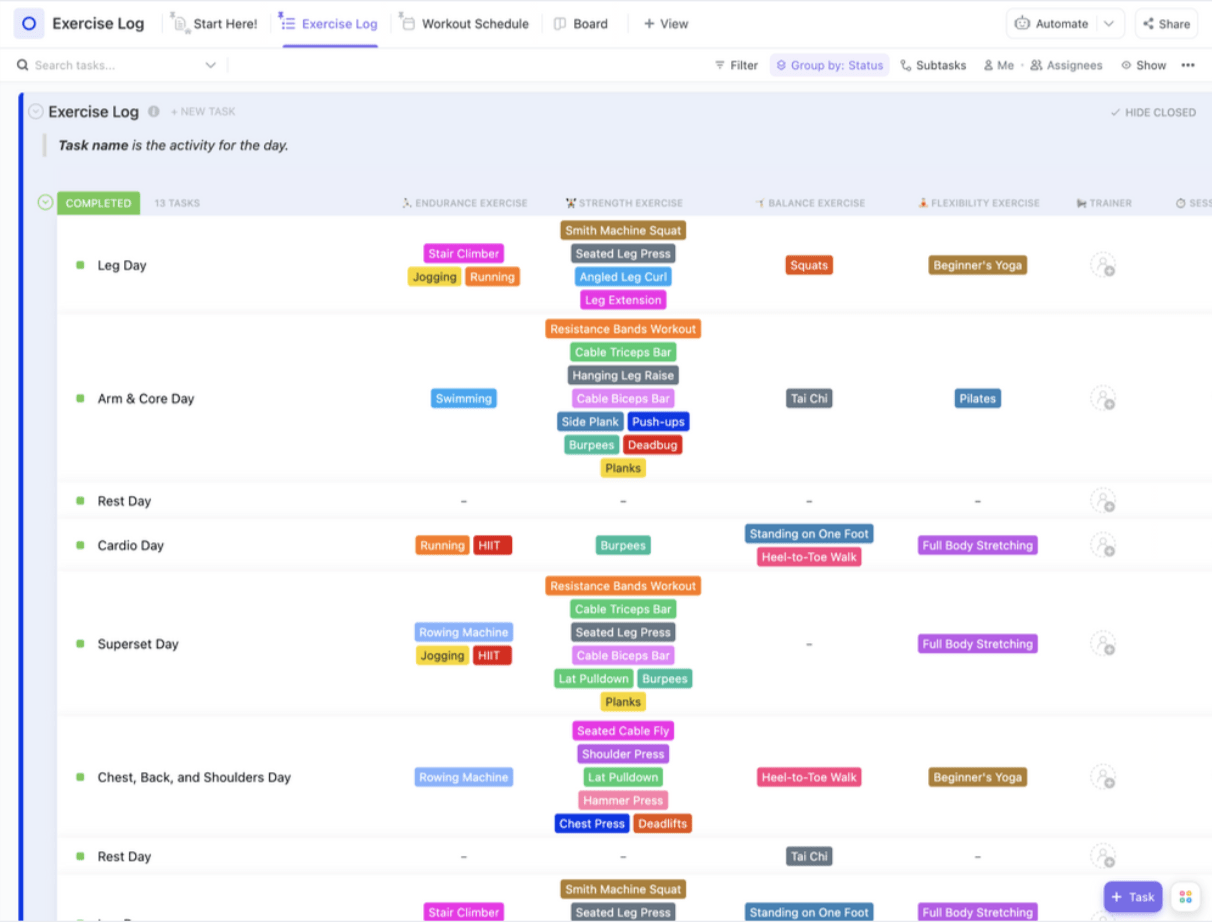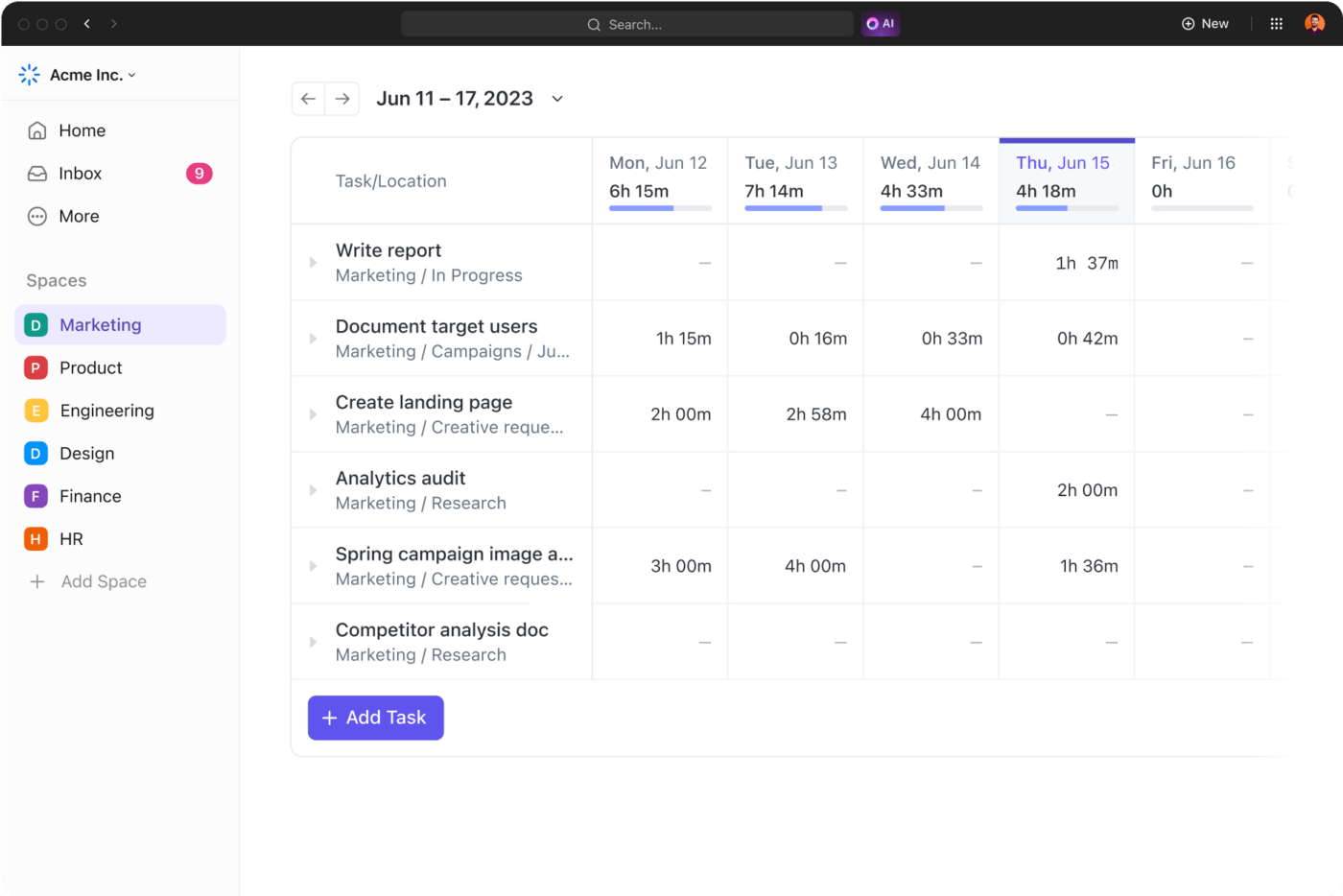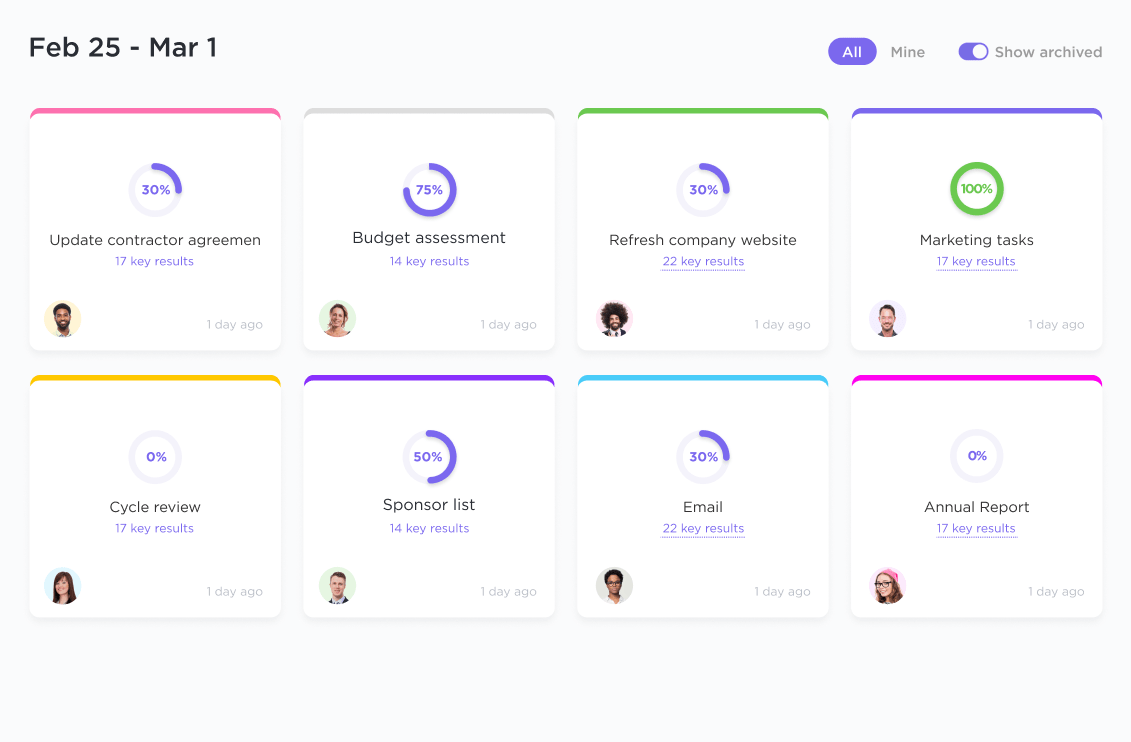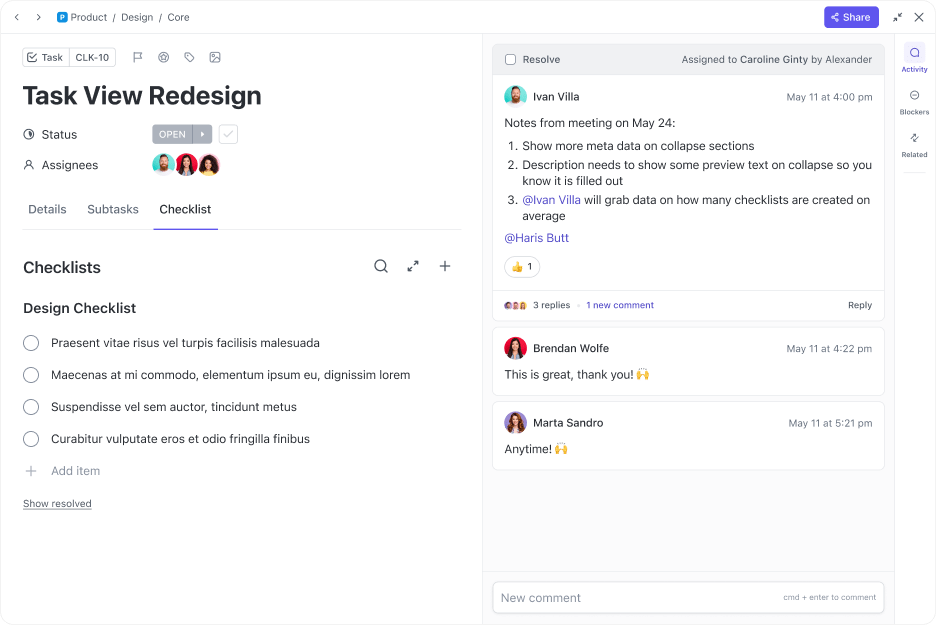Optimal Brain Workouts: 10 Healthy Neuroplasticity Exercises to Boost Cognitive Function

Sorry, there were no results found for “”
Sorry, there were no results found for “”
Sorry, there were no results found for “”
Did you know that despite its incredible complexity, the average human brain is not running at full throttle? It’s like having a high-performance sports car and only cruising in first gear! 🧠
Untapped brain power has always been a fascinating concept for humankind, with sci-fi movies like Lucy and Limitless exploring how unleashing that potential can turn us into all-powerful beings.
With the right exercises for neuroplasticity, you can not only supercharge your brain’s adaptability and resilience but also prevent cognitive decline that manifests in the form of neurodegenerative conditions like Alzheimer’s disease and dementia.
Let’s explore how leveraging neuroplasticity exercises can strengthen and rewire your brain. We’ll mention fun, engaging, and scientifically-backed mental workouts that can turn your brain into an agile gymnast, flipping and flexing its way to peak performance.
The concept of neuroplasticity, also called neural plasticity or brain plasticity, is rooted in the regenerative power of the human brain and its ability to reorganize itself throughout life by forming new neural connections.
You’re not confined to the brain you were born with—it constantly changes and adapts to new stimuli. Every experience you have and every thought you think of triggers and alters the flow of neuron activity. It’s how you learn new skills and form memories, and it’s what helps traumatic brain injury (TBI) or stroke patients recover.
Renowned neuroscientist and senior MIT lecturer Dr. Tara Swart drew a parallel between road construction and neuroplasticity:
Think of it as going from a dirt road to a motorway. I could say that I’m going to work on that pathway, which is currently a dirt road. The more I use it, and the more I repeat activities, I can build it up to a motorway.
Neuroplasticity is about more than just adding new neural connections, though. As an intelligent system, your brain also prunes away unused connections to keep itself efficient. For example, say you were a coder and have switched careers to become an actor. Over time, you’ll improve your creative skills, but your brain will start discarding your coding knowledge because it registers the lack of practice and determines you don’t need it anymore.
According to research published by behavioral scientist Joyce Shaffer, achieving neuroplasticity is possible at any age and can lead to chemical, anatomical, and performance gains. In simpler terms, here are some of the focused benefits to expect:
Your brain loves the new and wants to grow, but it’s easy to become a passive observer in its evolution. At some point, you need to take conscious steps toward assessing and improving its fitness.
Dr. Marian Diamond, a significant contributor to the research of anatomical neuroplasticity, summarized five essentials for maintaining healthy brain function: Exercise, novelty, diet, challenge, and love.
Based on these five tenets, we have crafted a list of 10 simple exercises for neuroplasticity to keep your brain shiny and healthy—it’s up to you how many you want to follow. To make your journey easier, we’ll check out some tools within ClickUp, an all-in-one productivity platform that will help you maintain your resolve and include these activities in your daily routine. 🌞
Boosting your brain’s neuroplasticity isn’t just about mental exercise! It’s also about getting your body moving. Regular physical exercise induces the release of essential proteins that keep neurons healthy, significantly enhancing your brain’s ability to adapt and grow. Here are four forms of workouts you can consider:
If you want to track your entire fitness journey, the ClickUp Exercise Log Template can be your trusted companion. Whether you’re into strength training or balance exercises, the template’s comprehensive layout and built-in trackers will help you stay consistent with your regime! 🤸

Isn’t it mind-blowing when you discover that something you genuinely enjoy, like solving puzzles, is also a fantastic workout for your brain? With each clue cracked, you’re not just filling in the blanks but forging new connections in your brain, sharpening your problem-solving skills, and keeping your mind flexible. 🧩
Take Sudoku, for instance—this number-placement puzzle can get increasingly complex and requires heavy use of strategy building, task sequencing, memory, and concentration skills. It has been linked to reducing the risk of dementia and rejuvenating brain health by 10 years! 🔢
But if you’re not into numbers, fun classic games like jigsaw puzzles, Tetris, and chess are also neuroplasticity-friendly!
Learning a new language is a bona fide brain workout because you’re indulging in a novelty. Let’s take the word “piano,” called “Klavier” in German. When you connect both words, process how they’re pronounced, and store them in your memory, you’ve signaled your nervous system to form new neural connections. 🎹
There’s a study about exchange students who, after five months of intense language study, experienced more density in their brain’s gray matter—the hub for language, attention, memory, emotions, and motor skills.
The impact is similar when you try to master a new musical instrument and stimulate parts of your brain responsible for vision, sound, movement, and memory. Research on cognitive decline found that those who engaged in musical instruments early in their life have a lower risk of memory problems later on.
Whether you’re learning a new instrument or getting acquainted with a new language, the first few steps can feel overwhelming—it’s like an avalanche of new information hitting your brain, making it difficult to remain consistent with the practice. This is a bummer because just like you wouldn’t expect to develop muscles after one gym session, your brain won’t grow if you give up too soon.
That’s where ClickUp comes in to fire up that neuroplasticity, setting you up with a whole set of functionalities that can help you stay consistent and focused.
For instance, the ClickUp Time Tracking feature is your tool for consistency in cognitive exercises. By setting aside specific times each day and tracking focused periods, you create a structured routine that’s fun to follow!
With ClickUp, you can balance your everyday tasks and neuroplasticity activities and establish self-accountability over time. Some of its handy features include:

The platform also allows you to break down long-term neuroplasticity exercises into more granular, easy-to-manage nested subtasks, which prevents the overwhelm to an extent.
If you explore a new language, we recommend playing with ClickUp AI, an AI writing assistant, while honing your skills every day. This tool effortlessly translates content into English, French, Spanish, Portuguese, German, Italian, and more, giving your brain more visibility into the language you hope to master!

They say life is a juggling act, but literal juggling could also be a brain-boosting adventure! Learning to juggle objects may not be high on your typical to-do list, but it’s a triple package—challenging, novel, and demanding focused attention.
Beyond the fun and games, studies reveal intriguing insights into the impact of juggling on the brain. Recent research has revealed that adults picking up the art of juggling experience a remarkable increase in gray matter in the occipitotemporal cortex of their brains—a type of plasticity that can make us fast learners!
The beauty of juggling’s cognitive perks lies in the fact that you don’t need to aspire to join the circus; the learning experience holds value. 🤹
The world is a book, and those who do not travel read only one page. – Saint Augustine
All those unfamiliar things that push you out of your comfort zone make your brain problem-solve and adapt—and travel is one of them. Remember when you had to find your place in the middle of the night, in the pouring rain, without knowing the local language? That was your brain doing some serious gymnastics! 🧳
When you explore new places, meet different people, try new foods, and soak up new cultures, you’re giving your brain a challenge and encouraging it to experience and learn from the diverse chapters of the world.
If you find it hard to organize travel plans, take the stress out of the equation with the ClickUp Trip Planner Template. It allows you to configure everything, from planning an itinerary to setting budgets, serving as a centralized location to visualize and manage your trip!

If you want to maximize your trip’s neuroplasticity benefits, start writing about your experiences. The time and energy you spend recalling your adventures and putting things into perspective leads to sufficient mental exercise.
Looking to write elegant and impressive texts for any intent? Use ClickUp’s Write with AI feature to draft beautiful, well-structured content for your blogs or professional communication! The tool comes with 100+ customizable prompts to generate content from scratch. Or, you can use it to fine-tune your existing texts, polishing it for elements like grammar, tone, and clarity!

Besides helping you write, ClickUp AI saves you a ton of idle time by helping you brainstorm ideas, write emails, and summarize lengthy content—it’s the ultimate work assistant to make your life easier and free up time for neuroplasticity exercises!
Nourishing your brain with the right nutrients can help foster new neural connections, boost your cognitive skills, and improve overall brain health. 🥗
Here are some dietary additions to consider:
It would be best to stay well-hydrated, as water plays a huge role in delivering nutrients to the brain and maintaining its functions.
Bonus: Use the ClickUp Meal Planning Template to create your desired nutrition plan for brain health!

Your brain, which utilizes about 20% of your energy, requires rest to maintain optimal health. 💤
Most bodies need an 8-hour cleansing process every night to eliminate toxins that accumulate throughout the day. Your sleeping hours are also when your brain sorts and consolidates memories, creating new neural pathways. To enjoy neuroplasticity perks, you should:
Mindfulness and meditation are another powerful way to bolster your brain’s neuroplasticity. This ancient practice calms your mind, helps you concentrate better, and enhances mental flexibility—even on chaotic days!
Research shows that regular meditation increases neuronal activity and metabolism, improving emotional well-being, productivity, and performance in control-oriented activities. You don’t need to be a Zen master to start. Setting aside a few minutes each day for mindfulness meditation, like deep breathing or body scans, can give you a powerful confidence boost to achieve your goals for the day! 🧘
If you’re serious about tackling everyday goals without hurting your brain, turn to ClickUp Goals—your strategist. Here is where you can lay out short- and long-term plans, set clear timelines, and watch progress update automatically. You can define measurable targets for your neuroplasticity endeavors and celebrate every win!

Excessive isolation is not only a productivity killer but can also make you painfully dull!
Social activities stimulate your brain, encouraging the formation of a new neural pathway. Participating in group activities, for instance, can challenge your brain to process new information, respond to different perspectives, and adapt to dynamic situations, enhancing flexibility and resilience. That’s why you shouldn’t underestimate the power of a good chat with a colleague or friend or a lively debate in your book club. 🗣️
You’ll be amazed at how a simple exercise of using your non-dominant hand for daily tasks can be effective. ✍️
Try brushing your teeth, eating, or writing with your non-dominant hand. Initially, it’ll feel awkward and clumsy, but that’s the point! You’re challenging your brain to build new neural pathways.
You’ll notice improved coordination and agility as you persist with this exercise. It even cultivates mindfulness, as you must concentrate more on the task. That’s a dual advantage—enhancing your brain’s plasticity and promoting inner calm!
On average, our cognitive function starts a gradual decline in our late 20s to early 30s. By identifying the factors that cause this, we empower ourselves to make informed choices and implement preventive measures where possible.
Some factors, like a genetic predisposition to neurodegenerative disorders and autoimmune diseases or excessive exposure to environmental toxins, can speed up cognitive decline. The following lifestyle choices/situations can also contribute to rapid loss of brain health:
Out of all the risk factors we mentioned above, uncontrolled stress can be one of the most difficult to handle. Stress has been linked to shrinking brain volume and altering neural pathways that make us dumber—that’s negative neuroplasticity!
There can be hundreds of stress triggers in our lives, but the ones related to work can seriously impact our confidence and quality of life. The solution? Simplify your work life by managing tasks with ClickUp.

Stress often comes from a lack of control, but with ClickUp, you can bring order to your life by staying focused, efficient, and on track with all your crucial tasks and projects. Personalize your Workspace to fit your distinct needs and preferences, whether working solo or with a team. Use ClickUp to:

Neuroplasticity is the dynamic force empowering us to keep learning, acquiring new skills, and elevating our cognitive abilities throughout our lives. But without proper mental inputs, certain neural pathways, like those supporting comprehension and communication skills, can fade over time. The key to peak brain health? Continuously seek out challenges that stretch the mental muscles!
ClickUp can be your loyal assistant in your quest for adult neuroplasticity! It can support anything from implementing new project management techniques to holding yourself accountable for personal goals!
The first step to strengthening your brain is eliminating disorganization—sign up for ClickUp as you kickstart your commitment to enhance your efficiency and organization skills. We don’t have to be Einstein, but there’s no harm in trying! 🧑🔬
© 2025 ClickUp